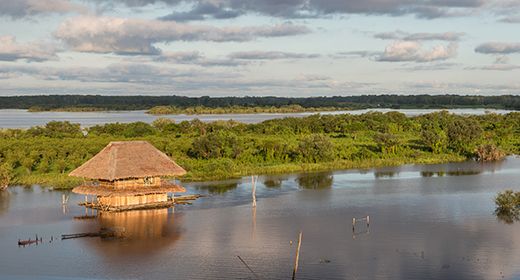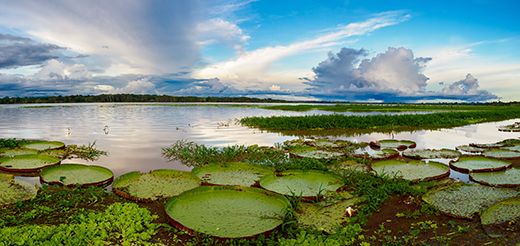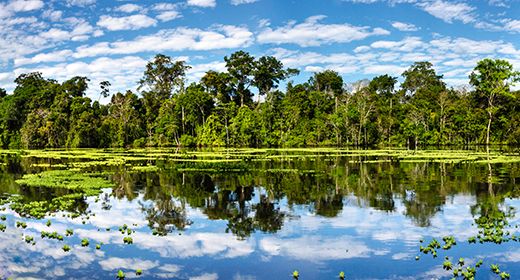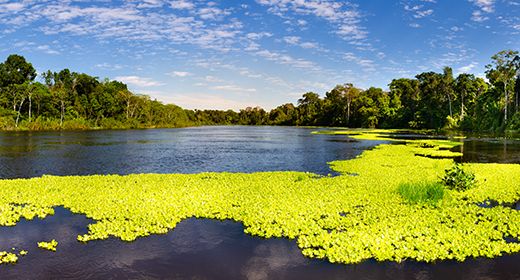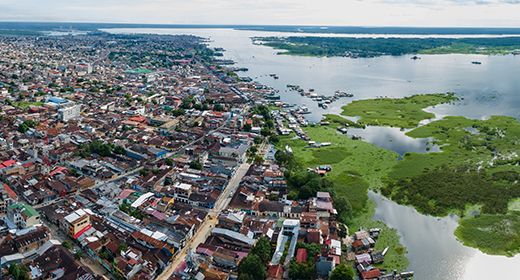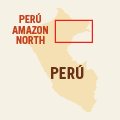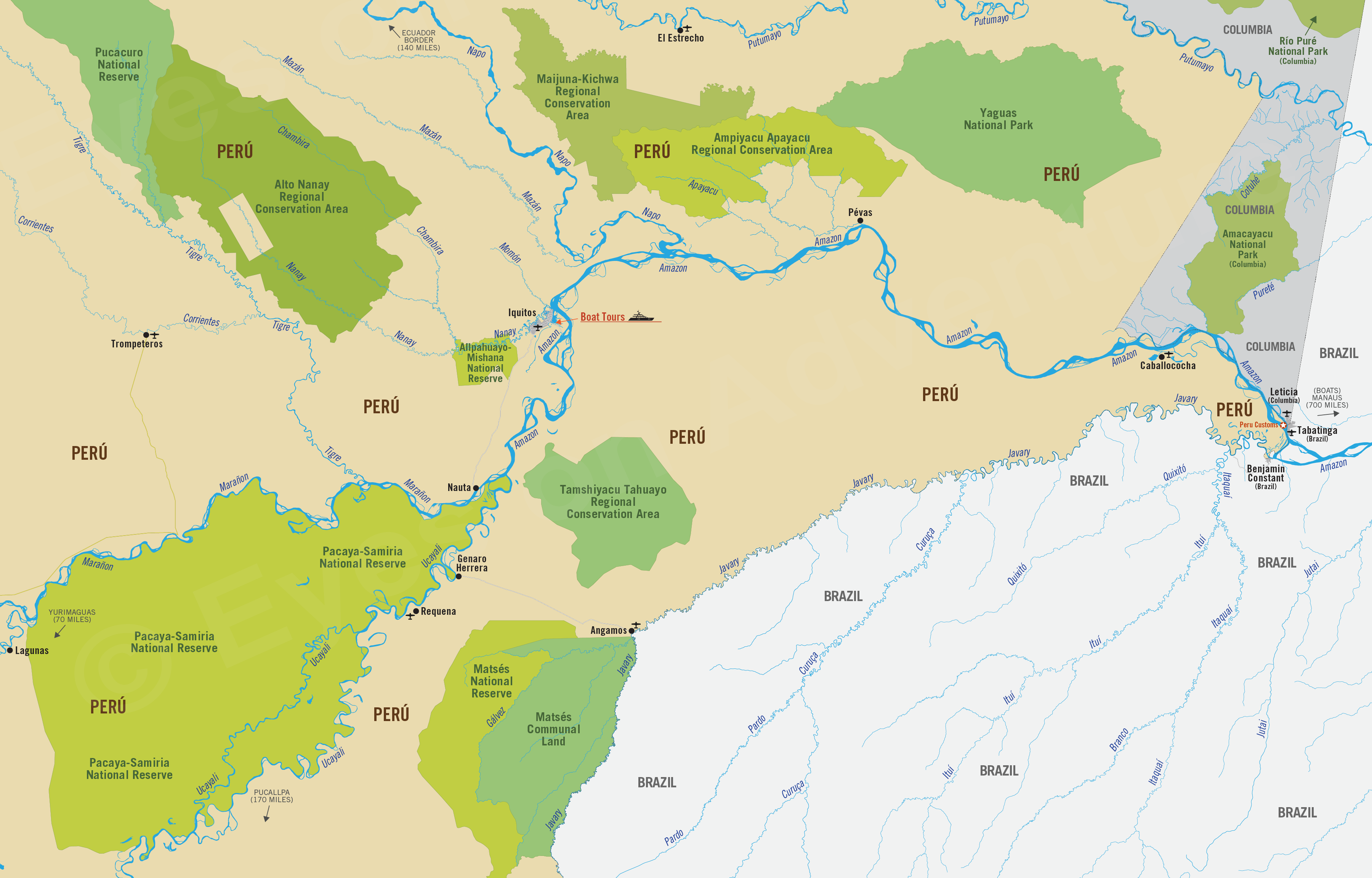Perú Amazon North
Region Links: Perú Amazon North, Perú Amazon South, Sacred Valley
Highlights
- Superb and authentic Amazon experience.
- Assortment of jungle lodges.
- Multi-day riverboat cruises depart from Iquitos.
- Pacaya-Samira National Reserve.
EOA Recommends: Amazon Rainforest Lodge, Delfin I, MV Aqua Amazon, Pacaya Samiria Amazon Lodge
One of Peru's most visited regions, the Northern Peruvian Amazon offers an authentic rainforest experience, with myriad birds and other wildlife living in a well-protected and dynamic wilderness ecosystem.
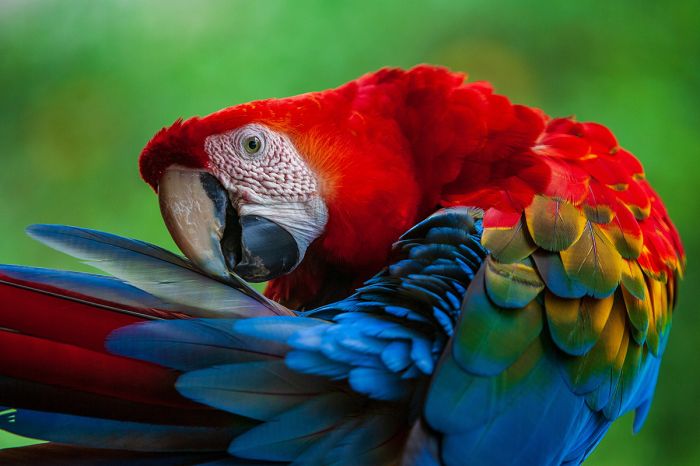
The scarlet macaw (Ara macao) is one of the Amazon's most striking birds.
The Amazon
Well over half of Peru is covered by the western portion of the Amazon rainforest, one of the world's greatest tropical jungles. The Amazon covers roughly 2.7 million square miles, the majority of which is in Brazil (58.4%), but it also extends west into Peru (12.8%), Bolivia (7.7%), Columbia (7.1%), Venezuela (6.1%), Guyana (3.1%), Suriname (2.5%), French Guiana (1.3%) and Ecuador (1%).
The jungle is home to an estimated 350 native ethnic groups and is the largest and most biodiverse tract of tropical rainforest in the world. Large-scale deforestation threatens this magnificent gem of biodiversity.
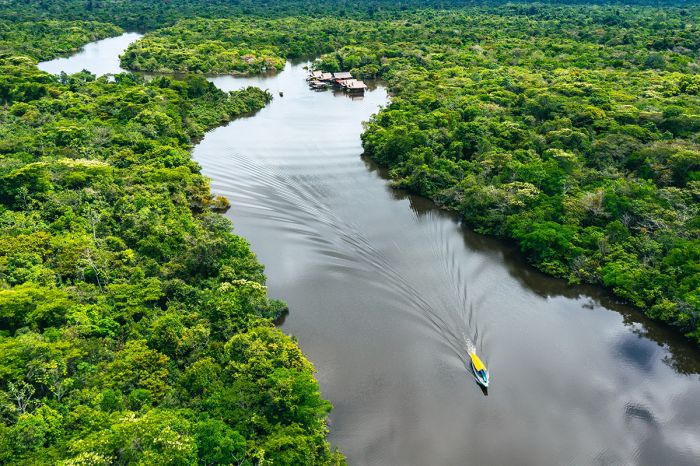
Aerial view of a boat on the Rio Momon, a tributary of the Amazon River, near Iquitos in Peru's Northern Amazon.
The Amazon is a must-see for nature lovers and Peru has a good number of jungle-based lodges that offer opportunities to see some of its wildlife, including jaguars, caimans, tapirs, capybaras, giant anteaters, otters, huge anacondas, sloths, and an abundance of primates. Birding in the Peruvian Amazon is outstanding and almost any lodge or camp offers expert birding guides.
Visitors will also likely see indigenous people that live in small villages along the waterways and still survive in traditional ways by hunting and fishing.
There are two distinct Amazonian destinations in Peru, one in the southeast just east of Cusco, and the other, a much larger section of rainforest in the far northeast.
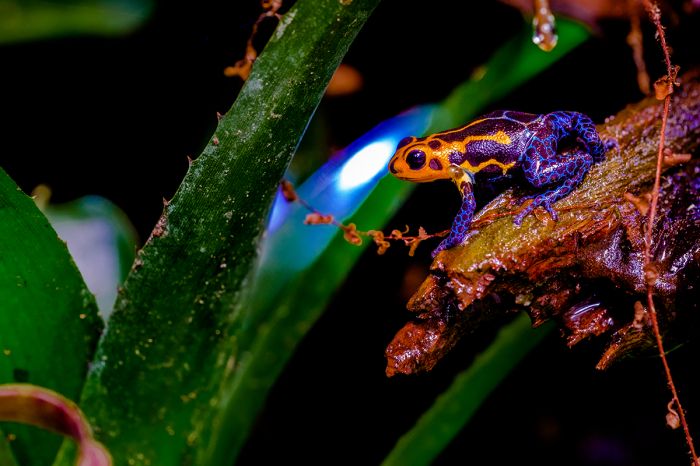
Small and colorful poison dart frogs like this Ranitomeya imitator "jeberos" are another highlight in the Amazon.
Northern Amazon
Peru's northern 'selva' (Spanish for 'forest') offers diverse jungle adventures and is centered around the city of Iquitos, which is situated on the bank of the Amazon River, as it flows east towards Brazil.
Multiple tributaries of the Amazon River flow from the Andes Mountains in western Peru and join together upstream from Iquitos, so by the time the water reaches the city, the river is several kilometers in width. The only means of reaching Iquitos is by air or boat and the lively, tourism-based town offers local culture and fascinating architecture.
The array of waterways around Iquitos offer visitors a chance to experience indigenous villages and explore the dense, primary rainforest of the Amazon basin. There is a good selection of excellent lodges along the Amazon River in both directions from Iquitos.
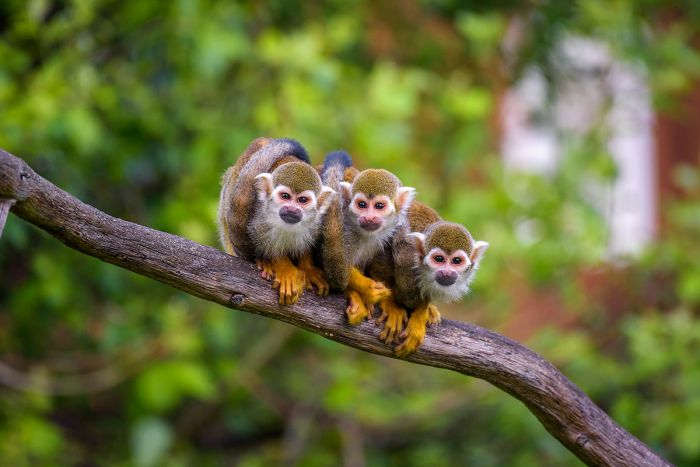
A trio of Ecuadorian squirrel monkeys (Saimiri cassiquiarensis macrodon) in northern Peru.
Additionally, unlike in the southern section of Peruvian Amazon, tourists in the northern section can hop onto one of the multi-day, river boat cruises that offer luxurious guest suites and exploration along the Amazon River.
The cruises include guided day-excursions on foot and smaller skiff boats, allowing guests access to wildlife living in the thick forest along the river. Some of the cruise vessels accommodate up to 40 passengers, while others have only 4 suites. The smaller vessels are ideal for small groups, who can take sole use of the cruise. The boat cruises all depart from and return to Iquitos.
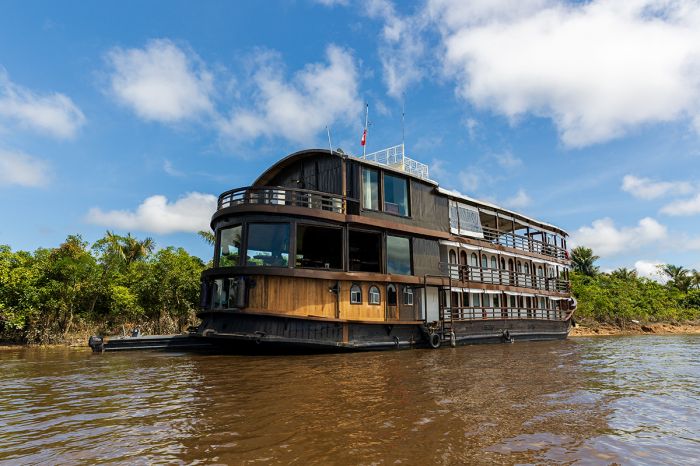
Multi-day Amazon river boat cruises leaving from Iquitos are a highlight.
Located south of Iquitos and upriver is the 8 000-square-mile Pacaya-Samiria National Reserve. The reserve protects the largest area of seasonally-flooded, Amazonian jungle in Peru. The reserve is bordered on the north by the Marañon River, which is one of the largest headwaters of the Amazon River.
There are countless smaller waterways and oxbow lakes in the reserve and its pristine rainforest is home to myriad wildlife, including jaguar, caiman, river dolphin, manatee, otter, multiple species of primate, and over 450 species of bird.
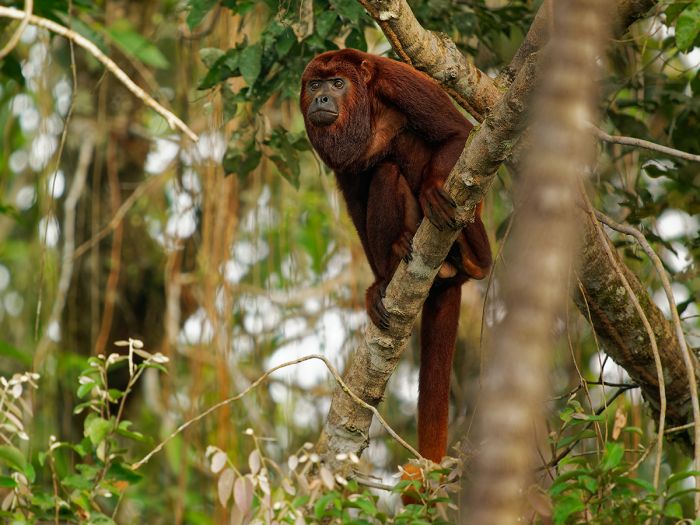
A Colombian red howler (Alouatta seniculus) in the northern Peruvian Amazon.
The Pacaya-Samiria reserve is only accessible on a cruise or private boat excursion with a guide. There are just a few jungle lodges in Pacaya-Samiria, and all offer an incredible Amazon experience. The lodges will provide boat transfers from Iquitos to the small town of Nauta and from there, a speedboat transfer to the lodge. Although Pacaya-Samiria is more difficult to reach than the lodges close to Iquitos, the experience of being remotely located, far from most of the tourists, is well worth the effort.
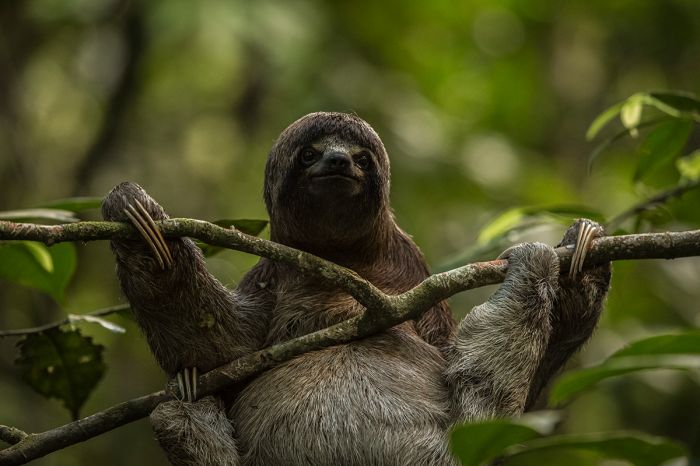
The brown-throated sloth (Bradypus variegatus) is found in the Amazon forest of northern Peru.




